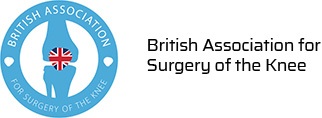Meniscal Injuries
Anatomy of the Knee Joint
The knee is one of the most complex and largest joints in the body and is very susceptible to injury. The meniscus is a small, C-shaped piece of cartilage in the knee. Each knee consists of two menisci, medial meniscus on the inner aspect of the knee and the lateral meniscus on the outer aspect of the knee. The medial and lateral menisci act as a cushion between the thighbone (femur) and shinbone (tibia).
Meniscal Injuries
Meniscal tears are common .They can occur at any age but are more common in athletes involved in contact sports. They can also occur later in life ( degenerative tears ) .
Causes of Meniscal Injuries
Meniscal tears often occur during sports. These tears are usually caused by twisting motion or over-flexing of the knee joint. Sports such as football, tennis, and basketball involve a high risk of developing meniscal tears. They often occur along with injuries to the anterior cruciate ligament, a ligament that crosses from the femur (thighbone) to the tibia (shinbone).
Symptoms of Meniscal Injuries
The symptoms of a meniscal tear include:
- Knee pain when walking
- A popping or clicking that may be felt at the time of injury
- Tenderness when pressing on the meniscus
- Swelling of the knee
- Limited motion of the knee joint
- Joint locking, if the torn cartilage gets caught between the femur and tibia, preventing straightening of the knee.
Diagnosis of Meniscal Injuries
A thorough medical history and a physical examination can help diagnose meniscal injuries.
You are likely to require investigations such as X-ray and MRI to help confirm the diagnosis.
Treatment of Meniscal Injuries
The treatment depends on the pattern and location of the tear, the symptoms you are experiencing, as well as your age and activity levels.
Mr Taneja will discuss the best option for you during the consultation. Mr Taneja's practice focusses solely on the knee , as a result he performs high volumes of meniscal surgery . Wherever possible, he will try to repair and thus preserve the meniscus.









